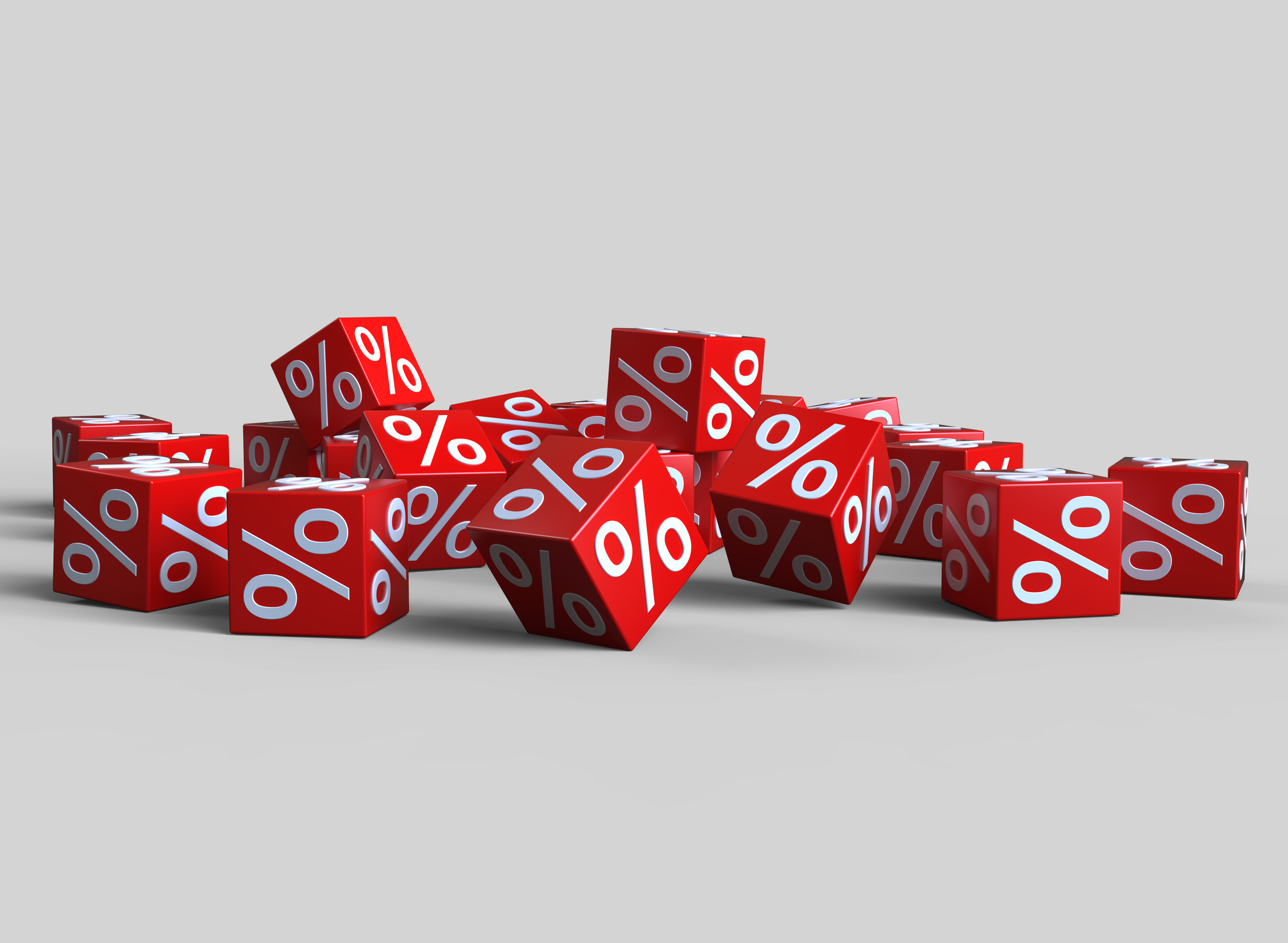The Art of Selling Stocks
You need to know what makes a business great to understand when it is no longer great. Then you'll know it's time to sell shares.

Successful stock investing requires two kinds of transactions: buying and selling. Unfortunately, nearly all advice givers, including me, concentrate on the first and leave you to fend for yourself on the second. So with this column I correct the omission and provide a set of rules about unloading shares.
As a rule, you should buy stocks with the intention of holding them for a long, long time, meaning at least ten years and perhaps forever. The reason is simple: Deciding to buy something is hard enough, but deciding to sell is even harder. You have to know what to sell, when to sell and what to replace it with. Plus, once you own a stock, your emotions, not just your money, are invested in it. You may become reluctant to sell an overpriced winner that's lost its competitive edge because it has been so good to you. Or you may hesitate to dump a troubled loser because doing so would confirm your stupidity. So make limited buying decisions and hardly any selling decisions. As Warren Buffett once put it, "Inactivity strikes us as intelligent behavior."
Sell because something has changed for the worse. In Common Stocks and Uncommon Profits, one of the best investing books ever published, Philip Fisher wrote, "It is only occasionally that there is any reason for selling at all." That occasional reason is "the deterioration of a company's underlying business." In Fisher's view, there were only two possible causes of a deteriorating condition: bad management (which usually meant a change at the top wasn't working out) or decreased prospects for a company's products. As my wife is fond of saying, this seems to be an insight into the obvious.
From just $107.88 $24.99 for Kiplinger Personal Finance
Become a smarter, better informed investor. Subscribe from just $107.88 $24.99, plus get up to 4 Special Issues

Sign up for Kiplinger’s Free Newsletters
Profit and prosper with the best of expert advice on investing, taxes, retirement, personal finance and more - straight to your e-mail.
Profit and prosper with the best of expert advice - straight to your e-mail.
But think about why most investors sell stocks: price. Either the price has gone up so much that it's time to take profits, or the price has gone down so much that it's time to cut losses.
In 1960, a professional dancer named Nicholas Darvas wrote a book called How I Made $2 Million in the Stock Market, which turned into one of the biggest financial bestsellers of all time. He preached the virtue of the stop-loss order — for example, buying Apple at $150 and telling your broker to sell automatically if the shares hit $120. That way, the most you could lose would be 20%. Selling at $120 as Apple continued to slide to $78 in January 2009 might have left you feeling pretty good at the time. Only problem is that today the stock sells for more than $400, and you don't own the best business in the world.
My advice: If you own a good business, don't sell it. Let your three-baggers (stocks that have tripled) turn into ten-baggers. And if the price is falling, buy more shares.
To know when to sell, know why you bought. The reason to own a stock is that you want to become a partner in a great business. That's the formulation of Warren Buffett's mentor, Benjamin Graham, and it is the starting point of all market wisdom. But you need to know what makes a business great. If you do, it will be much easier for you to determine when the business is no longer great and it's time to sell the stock.
Let's take a close look at Whole Foods Market (symbol WFM) as an example. The stock ran up from $9 in 2000 to nearly $80 at the end of 2005, then skidded to $8 in November 2008. Today it trades at $91. In other words, Mr. Market has run hot and cold on Whole Foods, as he does on most stocks. But the logic behind buying into this company remains the same: It's a business with an inspirational leader and a clear, attractive, modern vision that sells, at premium prices, things that everyone needs to consume every day.
Over the years, Safeway, Wal-Mart and other competitors have entered the healthy-grocery space. Just visit those stores, however, and you'll see why they fall short. The Safeways and Wal-Marts try to do it all, whereas Whole Foods stores — where you can't buy Coke or Kleenex — differentiate the brand strongly. Whole Foods' approach pays off. Sales have risen from $9 billion in the September 2010 fiscal year to $11.7 billion in the year that ended last September. Meanwhile, earnings jumped 80%.
[page break]
If you had bought Whole Foods at the start of 2000 and held on, you would have made eight times your original investment. But you would have been sorely tempted to sell — perhaps at $80 in 2005 (take profits!) or at $10 in early 2009 (bail out!). In fact, the smart play with Whole Foods — as with any company you love — is to buy and to keep buying, using a system of dollar-cost averaging. In other words, buy however many shares a specific dollar amount (say, $1,000) will purchase every quarter or year.
Will a time come when you should sell Whole Foods? Possibly. John Mackey, the 59-year-old founder and longtime CEO, will retire someday. When he does, I would closely scrutinize his successor, although I would not sell immediately. I would also worry if any CEO, Mackey included, decided to take Whole Foods in the wrong direction — opening a chain of organic restaurants, for instance. And I would worry if a rival began to outsmart the incumbent.
What I am not worried about is share price. Yes, Whole Foods appears expensive. The stock sells for 31 times estimated earnings for the current fiscal year. But according to the Value Line Investment Survey, Whole Foods' price-earnings ratio is usually twice the overall stock market's. And for good reason: Analysts, on average, predict that earnings per share will grow a stellar 17% annually over the next three to five years. Plus, the upscale grocer boasts a pristine balance sheet, with $1.2 billion in cash in the till and just $24 million in debt.
By contrast, consider Hewlett-Packard (HPQ), a company that could not adapt to shifting competitive forces in its main business, personal computing. One danger sign was that a succession of CEOs could not revive the company's profits. Another was a series of scandals. Do not hesitate to sell if you believe a company's management is cheating in any way. HP also provides a good example of the risks of investing in industries in which dramatic change is the norm. Groceries are safer. (For more on HP, see How to Avoid the Next Hewlett-Packard).
Sell for balance. There are two, and only two, reasons to sell a stock if a company is doing well. The first is for diversification. Imagine you have made eight times your original investment in Whole Foods and, as a result, it now accounts for half of your portfolio. Holding such a lopsided mix is asking for trouble, as investors in Enron know. Disaster can strike a company at any time. Smart investors rebalance annually. If you own 20 stocks, they don't each have to represent 5% of your holdings, but none should probably be more than 15%. Rebalancing is a good, emotionless way to trim holdings of a stock whose price is soaring. During the tech bubble of the late 1990s, for instance, rebalancing would have helped you avoid having too much of your portfolio in overpriced Internet stocks.
Sell because you have to. Or want to. The second reason to sell is because you need the money. Don't forget that the objective of investing is to provide the resources for you and your family to live a good life. At some point, you'll want to turn your partnership with a great business into cash that can be used to buy a house, pay for a college education or keep you comfortable in retirement. When you reach that point, sell without regret. Saving for goals such as these is why you own stocks in the first place.
James K. Glassman is founding executive director of the George W. Bush Institute and author of Safety Net: The Strategy for De-Risking Your Investments in a Time of Turbulence. He owns none of the stocks mentioned.
Profit and prosper with the best of Kiplinger's advice on investing, taxes, retirement, personal finance and much more. Delivered daily. Enter your email in the box and click Sign Me Up.

-
 Key State Tax Changes to Know for 2026
Key State Tax Changes to Know for 2026Tax Changes As 2026 begins, taxpayers across the country are navigating a new round of state tax changes.
-
 Who Said That? Match the US President to the Quotation
Who Said That? Match the US President to the QuotationWho better to give advice on aging, retirement and finances than a U.S. president? Our short quiz will determine whether you're a history buff or buffoon.
-
 When Do W-2s Arrive? 2026 Deadline and 'Big Beautiful Bill' Changes
When Do W-2s Arrive? 2026 Deadline and 'Big Beautiful Bill' ChangesTax Deadlines Mark your calendar: Feb 2 is the big W-2 release date. Here’s the delivery scoop and what the Trump tax changes might mean for your taxes.
-
 What Fed Rate Cuts Mean For Fixed-Income Investors
What Fed Rate Cuts Mean For Fixed-Income InvestorsThe Fed's rate-cutting campaign has the fixed-income market set for an encore of Q4 2024.
-
 The Most Tax-Friendly States for Investing in 2025 (Hint: There Are Two)
The Most Tax-Friendly States for Investing in 2025 (Hint: There Are Two)State Taxes Living in one of these places could lower your 2025 investment taxes — especially if you invest in real estate.
-
 The Final Countdown for Retirees with Investment Income
The Final Countdown for Retirees with Investment IncomeRetirement Tax Don’t assume Social Security withholding is enough. Some retirement income may require a quarterly estimated tax payment by the September 15 deadline.
-
 Dividends Are in a Rut
Dividends Are in a RutDividends may be going through a rough patch, but income investors should exercise patience.
-
 Municipal Bonds Stand Firm
Municipal Bonds Stand FirmIf you have the cash to invest, municipal bonds are a worthy alternative to CDs or Treasuries – even as they stare down credit-market Armageddon.
-
 High Yields From High-Rate Lenders
High Yields From High-Rate LendersInvestors seeking out high yields can find them in high-rate lenders, non-bank lenders and a few financial REITs.
-
 Time to Consider Foreign Bonds
Time to Consider Foreign BondsIn 2023, foreign bonds deserve a place on the fringes of a total-return-oriented fixed-income portfolio.
-
 The Five Safest Vanguard Funds to Own in a Volatile Market
The Five Safest Vanguard Funds to Own in a Volatile Marketrecession The safest Vanguard funds can help prepare investors for market tumult but without high fees.